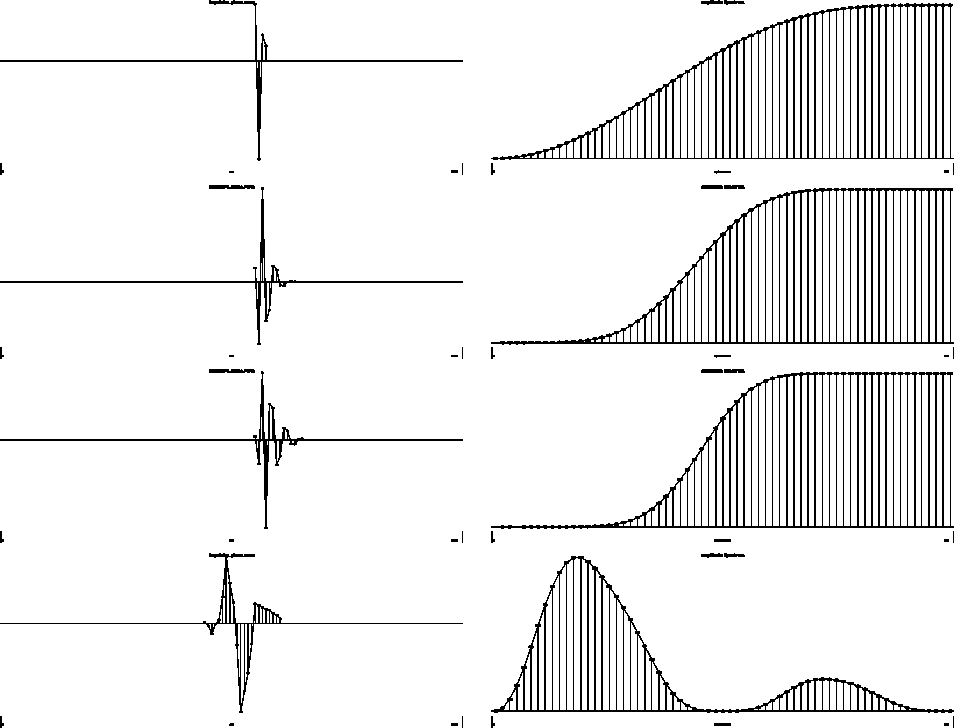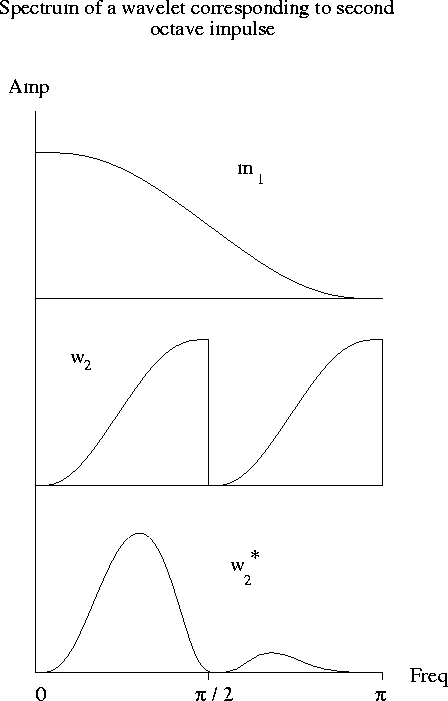![\begin{displaymath}
\left[\matrix{
c_0 & c_1 & & & & & \cr
c_0 & -c_1 & & & & ...
...cr
& & & & c_0 & c_1 & \cr
& & & & c_0 & -c_1 & \cr
}\right]\end{displaymath}](img11.gif)
Daubechies' 4-point set is only one of a series of compact wavelets. The user chooses an even number of mother coefficients ck, and the stated conditions of orthogonality and approximation define the wavelet transformation. The case of two coefficients leads to the Haar transform. The recursion matrix is
![\begin{displaymath}
\left[\matrix{
c_0 & c_1 & & & & & \cr
c_0 & -c_1 & & & & ...
...cr
& & & & c_0 & c_1 & \cr
& & & & c_0 & -c_1 & \cr
}\right]\end{displaymath}](img11.gif) |
(12) |
The orthogonality condition requires that
| c02 + c12 = 2 | (13) |
The remaining degree of freedom is used to reach a vanishing momentum of the zeroth order, as follows:
| c0 - c1 = 0 | (14) |
In general, the orthogonality condition for a Daubechies wavelet transform of order N accounts for N/2 relations of the form
| |
(15) |
where m = 0,1,..,N/2 - 1. The remaining N/2 degrees of freedom are used for achieving a maximum order of polynomial approximation p = N/2 - 1, as follows:
| |
(16) |
 |
|
spec
Figure 4 Amplitude spectrum of a higher scale wavelet. An impulse in the second octave is convolved by the wavelet operating on the double sample rate. In the next and final recursion, this output is convolved by a set of lowpass coefficients. Concatenation of the convolutions is equivalent to multiplication of the corresponding frequency filter. The first and second lines display the filter for the different recursion steps. The bottom line is the product of both spectra. |  |
Solving this system of equations and choosing the minimum phase solution
yields the N coefficients ck.![[*]](http://sepwww.stanford.edu/latex2html/foot_motif.gif)